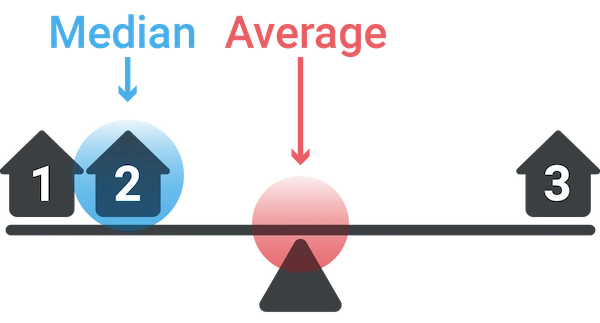Richest Cities in Wisconsin (2026)
by Kristen Carney
Updated: August 7, 2025
Richest City in Wisconsin
The richest city in Wisconsin is Chenequa in Waukesha County with an average household income of $456,817 as of 2023. While exceptionally affluent, Chenequa only has a population of 534 as of 2023. The richest city in Wisconsin with at least 5,000 people is Fox Point in Milwaukee County with an average household income of $239,298 as of 2023 and 6,591 people as of 2023 according to the most current Census data available (citation).
| Rank | City | County | Population | Average Income | Median Income |
|---|---|---|---|---|---|
| 1 | Chenequa | Waukesha | 534 | $456,817 | $250,001 |
| 2 | Oconomowoc Lake | Waukesha | 569 | $403,202 | $250,001 |
| 3 | Lac La Belle | Jefferson; Waukesha | 281 | $321,856 | $206,250 |
| 4 | River Hills | Milwaukee | 1,541 | $317,642 | $198,750 |
| 5 | Maple Bluff | Dane | 1,327 | $267,188 | $180,972 |
| 6 | Fox Point | Milwaukee | 6,591 | $239,298 | $140,818 |
| 7 | Shorewood Hills | Dane | 2,182 | $227,875 | $129,688 |
| 8 | Egg Harbor | Door | 392 | $219,572 | $86,705 |
| 9 | Mequon | Ozaukee | 25,329 | $209,904 | $147,391 |
| 10 | Whitefish Bay | Milwaukee | 14,532 | $208,063 | $154,255 |
| 11 | Merton | Waukesha | 3,655 | $207,397 | $168,661 |
| 12 | Kohler | Sheboygan | 2,274 | $195,676 | $135,688 |
| 13 | Chain O' Lakes | Waupaca | 1,006 | $195,535 | $83,438 |
| 14 | Wind Point | Racine | 1,622 | $191,951 | $134,375 |
| 15 | Elm Grove | Waukesha | 6,416 | $185,925 | $133,304 |
| 16 | Tunnel City | Monroe | 105 | $181,232 | -$1 |
| 17 | Bayside | Milwaukee; Ozaukee | 4,338 | $181,050 | $144,500 |
| 18 | North Bay | Racine | 204 | $176,397 | $121,250 |
| 19 | Fontana-on-Geneva Lake | Walworth | 1,861 | $175,726 | $104,583 |
| 20 | Brookfield | Waukesha | 41,268 | $171,710 | $124,026 |
Median Income versus Average Income: Which Should You Use?
We usually suggest using median income data – either instead of or in addition to – average income data as a true indicator of wealth. If you haven’t thought about median versus average since your last standardized test, you aren’t alone. Here’s what they are:
- average is the sum of a set of numbers divided by the count of numbers in the set
- median is the middle number in the set of numbers

Now let’s say you had the following simplified set of income data.
Household 1: $30,000
Household 2: $50,000
Household 3: $1,000,000
The average income for this set is $360,000. The outlier data point ($1,000,000) skews the average WAY up. Conversely, the average income would be skewed WAY down if someone had an income of $500. The median income for the same data set is $50,000. Outlier data doesn’t skew the median.
Most Business Owners Should Use Median Income
So most business owners should use the median income as a true indicator of wealth, because it provides a more accurate representation of a typical income, especially in areas with significant income disparity.
When Should You Use Average Income
If your target market is high-income households, the average income may be more relevant. This is because the average income can highlight the presence of a higher concentration of wealthy individuals, which is beneficial for luxury goods and services marketing. We’re using average income on this page because using the Census’s highest reported median value of $250,001 could result in multiple ties for the richest geography.
Why do so many cities have a median value of $250,001?
The Census' American Community Survey uses $250,000+ as a jam value for median income estimates to protect privacy, ensure data consistency, and simplify reporting. A "jam value" in survey data refers to a placeholder or default value used when actual data points are unavailable, incomplete, or exceed certain thresholds. We represent this jam value as $250,001 to make it easy for you to sort.
You might also be interested in:
Email Me When New Data Are Released
Join thousands of subscribers and receive just 1 (ONE!) email a year in December when the US Census Bureau releases new income data for Wisconsin richest cities.
SOURCES
United States Census Bureau. Annual Estimates of the Resident Population: April 1, 2020 to July 1, 2023. U.S. Census Bureau, Population Division. Web. May 2024. http://www.census.gov/.
United States Census Bureau. B01001 SEX BY AGE, 2023 American Community Survey 5-Year Estimates. U.S. Census Bureau, American Community Survey Office. Web. 12 December 2024. http://www.census.gov/.
United States Census Bureau. B19013 Median Household Income, 2023 American Community Survey 5-Year Estimates. U.S. Census Bureau, American Community Survey Office. Web. 12 December 2024. http://www.census.gov/.
United States Census Bureau. “DP03 SELECTED ECONOMIC CHARACTERISTICS.” 2023 American Community Survey 5-Year Estimates. U.S. Census Bureau, American Community Survey Office. Web. 12 December 2024. http://www.census.gov/.
Products & Services
Plumbing
Connect
- 1-800-939-2130
- Contact Us
© Copyright 2026 Cubit Planning, Inc.